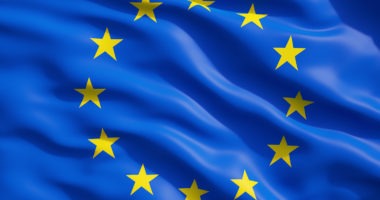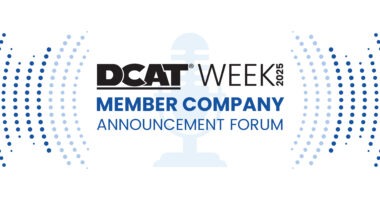IMS Projects Opportunities and Challenges for Biosimilars
Some 30 companies are actively developing biosimilar medicines for launch and are pursuing biosimilar versions of 16 distinct molecules that will lead to greater competition by 2020, including eight major biologic medicines that are expected to lose exclusivity protection by 2020. Despite these opportunities, challenges remain, including differing payer requirements and physicians’ uptake, particularly in Europe. DCAT Value Chain Insights (VCI) looks at the potential for biosimilars..
A narrow focus by payers on price alone risks constraining the longer-term opportunities for biosimilars, making the biosimilars market less attractive for manufacturers by reducing incentives to invest in the development of subsequent waves of biosimilars. So what is ahead?
Tracking the opportunities
The global biologic medicines market is projected to exceed $390 billion by 2020 and account for 28% by value of the total global pharmaceutical market, according to report, Delivering on the Potential of Biosimilar Medicines, by the IMS Institute for Healthcare Informatics. By 2020, biosimilars have the potential to enter markets for a number of key biologics that now have current sales of more than EUR 40 billion ($45 billon). The cumulative potential savings for healthcare systems in the five major European Union (EU) markets (i.e., EU5) and the US as a result of biosimilars could exceed EUR 50 billion ($56 billion) in aggregate over the next five years and reach as much as EUR 100 billion ($113 billion), according to the IMS study. It estimates that almost 50 distinct biosimilars are currently in development.
Significantly for the biosimilars market are key biologics coming off patent in the near term. The IMS study estimates the combined value of the eight top-selling biologics coming off patent between 2015 and 2020 in the EU5 (France, Germany, Italy, Spain, and the UK) and the US at EUR 42.3 billion ($47.7 billion). Two main therapy areas, notably inflammation and diabetes, account for three top-selling biologics that will face biosimilars competition. In inflammation, Humira (adalimumab) for multiple inflammation indications, including rheumatoid arthritis, Crohn’s disease, and psoriasis among others with sales of EUR 10.8 billion ($12.2 billion) in the EU5 and the US is slated for loss of exclusivity in the US and EU in 2018. Also, Enbrel (etanercept), which is used to treat several chronic inflammation conditions, had sales of EUR 6.9 billion ($7.8 billion) in the EU5 and the US (the year to September 2015), will experience loss of exclusivity in the EU in 2016 and in 2028 in the US. In diabetes, Lantus (insulin glargine) lost exclusivity in the EU in 2015 and had sales of EUR 8.7 billion ($9.8 billion) in the EU5 and in the US in the year to September 2015.
)In addition to adalimumab, etanercept, and insulin glargine, other key biologics losing patent expiration between 2015 and 2020 include: infliximab (sales of $5.3 billion in the EU5 and US to the year September 2015), rituximab ($4.2 billion in EU5 and US sales), peg-filgrastim ($3.9 billion in EU5 and US sales), trastuzumab ($3.2 billion in EU5 and US sales), and follitroplin alfa ($300 million in EU5 and US sales). Sales of these eight biologics, in the absence of any biosimilar competition, are expected to reach EUR 47 billion ($53 billion) over the period of 2016-2020, according to data from IMS Health.
Competition and other challenges
To illustrate the competition in the biosimilars market, at the end of 2015, there were some 41 biosimilar products in the pipeline for four of these eight key biologics products (infliximab, etanercept, rituximab, and adalimumab). Additional biosimilar products are also in development for other biologics tocilizumab (reference product, RoActemra), golimumab (reference product Simponi), and abatacept (reference product Orencia). The continued development of biologics in the innovator drug market will fuel future growth prospects in biosimilars. IMS estimates that between 2016 and 2020, some 225 new active substances are expected to be launched with around 30% of these products expected to be biologics (including both specialty and non-specialty drugs), which is in keeping with recent trends. Since 1996, 27% of all new active substances have been biologic-based drugs. With these new drugs, however, also come pricing pressures for payers, which will continue to look for more cost-effective treatments, including biosimilars.
The IMS report, however, points out that the impact of biosimilars, such as in adoption of biosimlars and resulting price reductions, varies according to the drug policies in a given country. The IMS study analyzed the impact of price reductions with respect to biosimilars in the EU5 markets. The study showed variation in the biosimilar policies and thus variation in pricing by different countries. For example, using the erythropoietin market as an example, the observed price reduction in the biosimilars accessible market in 2015 following the introduction of biosimilar competition ranged from 39% in France to 55% in Germany. In Finland, Norway, and Sweden, observed price reductions ranged from 25% to 29%. For filgrastim, the observed prices change in 2015 for biologic and biosimilar filgrastim, following the launch of the biosimilar version, varied from 14% in France to 27% in Germany. The variation suggests that utilization of biosimilars may not be optimized for all products in all markets and so that it may not be certain how payers capitalize on biosimilars as they enter certain markets.
“The prospect of more affordable biologic options that are safe and effective opens up opportunities for health systems to expand access to more patients, and frees up resources for investment in new areas,” said Murray Aitken, IMS Health senior vice president and executive director of the IMS Institute for Healthcare Informatics, in commenting on the report. “This also can yield significant cost savings—but not all markets are ready to fully benefit from the imminent surge of biosimilar molecules.”
The IMS report point out that across Europe, payers have adopted a variety of approaches to encourage physicians to prescribe biosimilar medicines, motivate manufacturers to participate in the market, and provide adequate clinical evidence to support the prescribing of these treatments. Germany is among the most successful countries on this front, educating physicians and implementing measures designed to stimulate biosimilar prescribing. By contrast, Austria’s approach—where some biosimilar medicines are subject to mandatory price reductions that may force manufacturers out of the market—has had the opposite effect, resulting in reduced access to some biosimilar products. The report point out that a balanced approach that incorporates education of physicians, patients and payers, and includes appropriate incentives for physicians and manufacturers, will help ensure that the benefits of biosimilars are fully realized.





